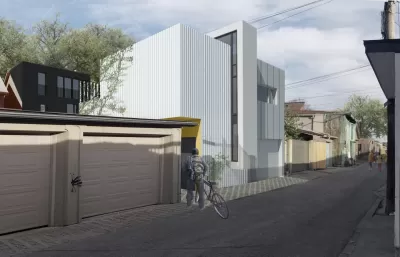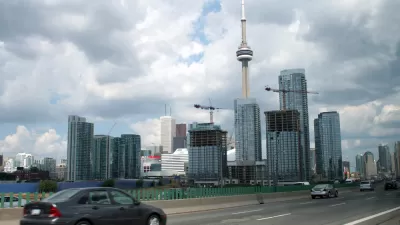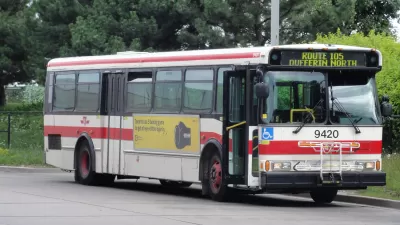Laneway development throughout the city is ramping up with new construction and public space projects.

Emily Mathieu reports that efforts to develop laneways are happening across Toronto as a way to increase available housing and density:
Laneway housing is a bit of a new frontier in terms of urban development — one that’s beginning to gain traction in Toronto after council passed regulations last summer allowing homeowners to convert garages and build up unused space into suites. The rules state the houses must be self-contained and can be rented out or used to provide a home for family members, but not sold off as a separate property.
In addition to housing, advocacy groups such as the Laneway Project want to see laneways better utilized as public spaces with shops, events, and public art. "Some Toronto laneways are already well used as public space, including Graffiti Alley, where street artists have transformed the backsides of Queen St. W. buildings, between Spadina Ave. and Portland St.," writes Mathieu.
There are concerns, however, about design and management of laneways for use by vehicles, cyclists, and pedestrians. Advocates say signage, signals, and improved lighting will make the laneways safer for all users sharing the space and ensure that residents and trucks still have access to homes and businesses.
FULL STORY: Laneway housing begins to take shape under Toronto’s new rules

Maui's Vacation Rental Debate Turns Ugly
Verbal attacks, misinformation campaigns and fistfights plague a high-stakes debate to convert thousands of vacation rentals into long-term housing.

Planetizen Federal Action Tracker
A weekly monitor of how Trump’s orders and actions are impacting planners and planning in America.

In Urban Planning, AI Prompting Could be the New Design Thinking
Creativity has long been key to great urban design. What if we see AI as our new creative partner?

King County Supportive Housing Program Offers Hope for Unhoused Residents
The county is taking a ‘Housing First’ approach that prioritizes getting people into housing, then offering wraparound supportive services.

Researchers Use AI to Get Clearer Picture of US Housing
Analysts are using artificial intelligence to supercharge their research by allowing them to comb through data faster. Though these AI tools can be error prone, they save time and housing researchers are optimistic about the future.

Making Shared Micromobility More Inclusive
Cities and shared mobility system operators can do more to include people with disabilities in planning and operations, per a new report.
Urban Design for Planners 1: Software Tools
This six-course series explores essential urban design concepts using open source software and equips planners with the tools they need to participate fully in the urban design process.
Planning for Universal Design
Learn the tools for implementing Universal Design in planning regulations.
planning NEXT
Appalachian Highlands Housing Partners
Mpact (founded as Rail~Volution)
City of Camden Redevelopment Agency
City of Astoria
City of Portland
City of Laramie





























